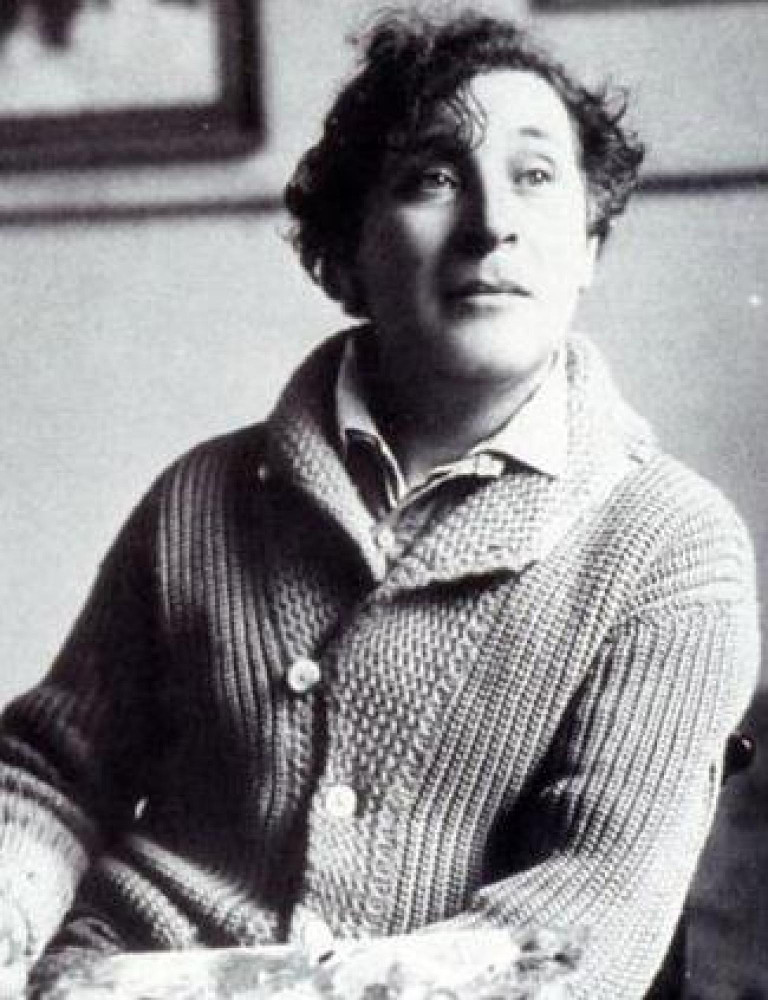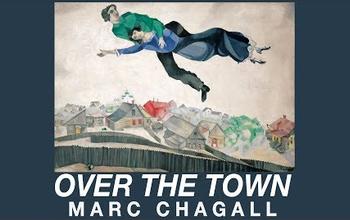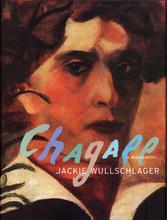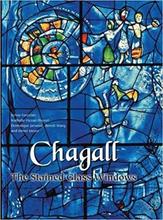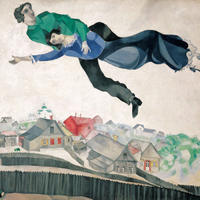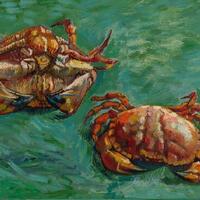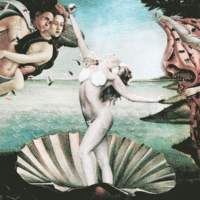More about Marc Chagall
- All
- Info
- Video
- Shop

Contributor
The famous Jewish artist Marc Chagall was born by the name Moishe Shagal on July 6, 1887, though he claims to have been born on July 7 because apparently, he preferred the number seven.
As his grand entrance to the world, baby Chagall was born dead. To resuscitate him, his family first tried to prick his skin with needles, but when he didn’t respond, they had the genius idea of dunking him in a pail of cold water to bring him back to life. Miraculously, this worked.
He was the eldest of nine children, with eight younger sisters. This automatically granted him the privilege of being a mama’s boy, so though he grew up in a Hasidic Jewish family of modest means— his mother ran a grocery store and his father worked in a herring warehouse—, and though his religion forbade the graphic representation of anything created by God, Chagall eventually convinced his mother to let him attend a local art school. There, he was notorious for being the only student to use the color violet.
Chagall married a woman named Bella, who was the daughter of one of the wealthiest families in his town. This was a great deal for him, but her parents were terrified of their daughter starving as an artist’s wife. She was Chagall’s muse and made appearances in his pieces, many times floating in the air like in his painting, Over the Town.
In 1941, Chagall stubbornly agreed to move from Paris to New York after threats of Jewish persecution. He and his family ended up leaving Europe barely in time to avoid the Nazi invasion.
After Bella died of a viral infection, their daughter Ida realized she had a sulking artist on her hands and quickly arranged a housekeeper to tend to her father. She put him under the care of a supple English housekeeper named Virginia McNeil. At the time, McNeil was married to a Scottish painter who suffered from depression. Seeing as she spent most of her days with a far-more experienced and far-more successful artist who was now single and perhaps willing to mingle, the 30-year-old Virginia quickly became hot and bothered for the 57-year-old Chagall. Soon, she left her husband and married Chagall, and they eventually moved to France with their son David. In 1951, after two marriages to two artists, McNeil suddenly decided she didn’t like being an artist’s wife. She took their son and left Chagall.
Again, Ida acted quickly, using her foolproof method. She hired another beautiful broad for her brooding father. This time, it was a 40-year-old Russian woman named Valentina Brodsky whose nickname, Vava, oozed of sleazy sex appeal. Once more, the artist wooed his younger housekeeper with his impressive handiwork and the two married. Vava acted as his “manager” of sorts. Perhaps this is the ancient term for what is now referred to as a “gold-digger” since she took complete control his finances and cut him off from the world. By this point, it seemed like the old man didn’t care too much, as long as he could paint in peace, go to the Louvre on Sundays, and collect all the sugar cubes from his table before leaving a restaurant.
Featured Content
Here is what Wikipedia says about Marc Chagall
Marc Chagall (born Moishe Shagal; 6 July [O.S. 24 June] 1887 – 28 March 1985) was a Russian and French artist of Belarusian origin. An early modernist, he was associated with the École de Paris, as well as several major artistic styles and created works in a wide range of artistic formats, including painting, drawings, book illustrations, stained glass, stage sets, ceramics, tapestries and fine art prints.
Chagall was born in 1887, into a Jewish family near Vitebsk, today in Belarus, but at that time in the Pale of Settlement of the Russian Empire. Before World War I, he travelled between Saint Petersburg, Paris, and Berlin. During that period, he created his own mixture and style of modern art, based on his ideas of Eastern European and Jewish folklore. He spent the wartime years in his native Belarus, becoming one of the country's most distinguished artists and a member of the modernist avant-garde, founding the Vitebsk Arts College. He later worked in and near Moscow in difficult conditions during hard times in Russia following the Bolshevik Revolution, before leaving again for Paris in 1923. During World War II, he escaped occupied France to the United States, where he lived in New York City for seven years before returning to France in 1948.
Art critic Robert Hughes referred to Chagall as "the quintessential Jewish artist of the twentieth century". According to art historian Michael J. Lewis, Chagall was considered to be "the last survivor of the first generation of European modernists". For decades, he "had also been respected as the world's pre-eminent Jewish artist". Using the medium of stained glass, he produced windows for the cathedrals of Reims and Metz as well as the Fraumünster in Zürich, windows for the UN and the Art Institute of Chicago and the Jerusalem Windows in Israel. He also did large-scale paintings, including part of the ceiling of the Paris Opéra. He experienced modernism's "golden age" in Paris, where "he synthesized the art forms of Cubism, Symbolism, and Fauvism, and the influence of Fauvism gave rise to Surrealism". Yet throughout these phases of his style "he remained most emphatically a Jewish artist, whose work was one long dreamy reverie of life in his native village of Vitebsk." "When Matisse dies", Pablo Picasso remarked in the 1950s, "Chagall will be the only painter left who understands what colour really is".
Check out the full Wikipedia article about Marc Chagall

